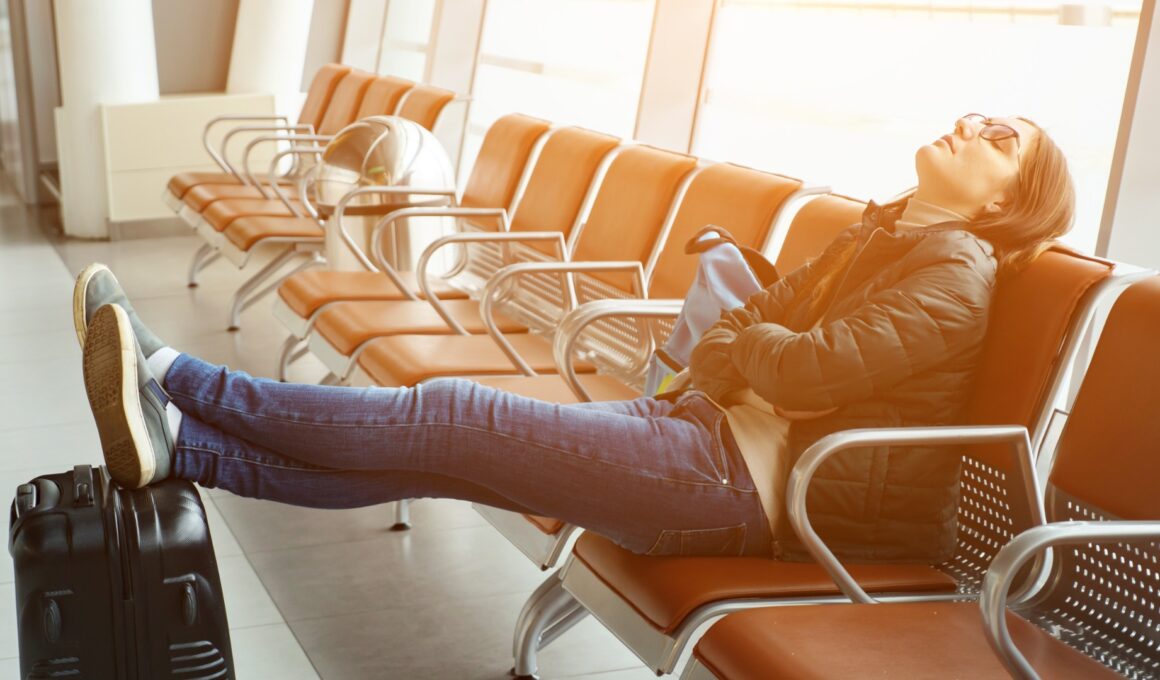Have you ever felt envious of people who can fall asleep anywhere at will? The kinds of people who sleep soundly next to you on the plane while you toss and turn trying to get comfortable with the limited leg room and horridly dry air, or who can just turn off the alarm in the morning and go straight back to sleep while you lie staring up at the ceiling?
If so, then you have probably imagined just what a skill it would be to be able to sleep on cue. That way, every spare moment you had could be used to top up your energy levels and prepare you for the trials ahead. And whenever you found yourself in a situation that was boring or uncomfortable, you could simply switch off and not wake up until it was over.
The good news is that you don’t need to be jealous any longer – this is a skill that can be learned, and with practice you’ll find that it’s actually quite easy to switch yourself off and on just like a television set…
The Challenges
The first thing to do when trying to fall asleep under less-than-ideal circumstances is to recognise what you’re up against. Generally this includes a short time scale (which instantly places pressure on you to fall asleep) and a lack of comfort. Then at the same time if you’re the kind of person who takes ages to fall asleep in bed as well, then you’ll also be fighting against your natural tendencies.
These are the issues you need to address if you’re going to be successful, which you can do using the following strategies.
Relax: This might sound obvious, but it’s actually the precise opposite of what many people do when trying to fall asleep quickly. The problem is that when you want to fall asleep quickly, you will place pressure on yourself to do so which will instantly make you less relaxed and more tensed-up.
The first thing you have to do then, is acknowledge that it’s fine even if you don’t sleep. Simply being ‘very relaxed’ for twenty minutes can actually be very good for you too and you’ll find that this is often enough to give you the energy boost you need. Don’t aim to fall asleep quickly, simply aim to ‘close your eyes’ and recharge your batteries. Ironically this will make you far more likely to drift off completely.
Enjoy It: The next thing you need to do to feel relaxed is to make a conscious effort to enjoy where you are. Even if you aren’t terribly comfortable, getting the opportunity to lie down quietly and just rest while being alone with your thoughts is rare indeed and you should make sure that you appreciate this. For at least ten minutes there’s nothing you need to do and nowhere you need to be, why not think up a story to pass the time?
Remove Your Worries: It’s not easy to relax and enjoy being comfortable if you’re worrying about things the whole time. If you’re on a plane then you might well be worrying that you’re going to crash or be ill, but more universal is the worry that you might need the toilet. These nagging concerns will stop you from switching off, so it’s time to use a little ‘cognitive restructuring’ to put them out of your mind.
And the trick you’re going to use here is simply to tell yourself that those things don’t matter, that you’re just sleeping for ten minutes, and that that is the most productive thing you can do. If you need the toilet a bit, it doesn’t matter because you’re an adult and you can hold it. If you need a drink then you can forget that by falling asleep. And if you’re worried about the plain – well then lying awake panicking isn’t going to improve your chances of survival. So just let go of any concerns and make the conscious decision that any problem can wait until you wake up…
Ease Your Muscles: If you’re tossing and turning in an airplane seat or on the bench in a bus shelter, then you aren’t going to get comfortable and you won’t be able to sleep. To get around this then, you should instead try using muscle-relaxation techniques in order to make this hard and awkward seat feel like a warm and comfy bed.
First of all, put yourself in the ‘natural’ position for where you are. If you’re in a chair, that means sitting so that you’re facing forward but leaning your head back against the seat; if you’re in bed then it means lying on your back with your head facing up on the pillow. Now starting with at the top of your body and working your way all the way down, you are going to consciously tense each muscle before letting it completely relax and seemingly melt into your seat/bed/floor. That means doing everything from your face all the way down to your toes and really focussing on how different you feel as you release all the tension. Once this is done, you can seal the deal by imagining a silk blanket being gently dropped over you, and then your body sinking away into the surface below you…
Listen to Your Breathing: Now the final stage in this relaxation process is to listen to the sound of your own breathing. The rhythmic sound will help you to slow yourself down while the act of focussing will prevent your mind from racing for a while. Before you know it you’ll forget what you’re doing and will be making your way into the land of nod…





This actually really helped, thank you so much!